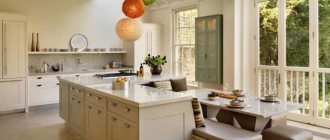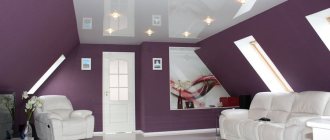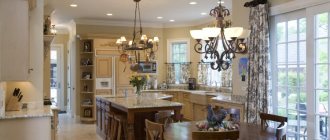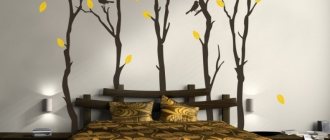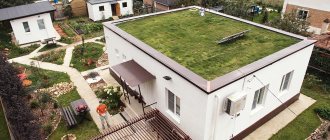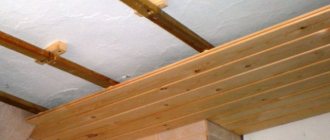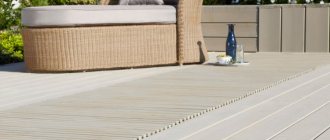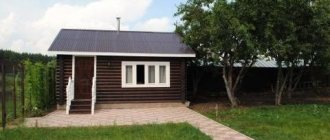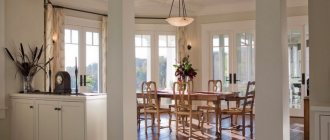Tips for choosing
Like any solution, a built-in ironing board has its advantages and disadvantages.
Pros:
- The built-in ironing board does not spoil the appearance of the room and does not stand out from the interior. It will not be conspicuous and remind guests of the hardships of homework.
- Takes up little space. You won't think about where to store it, you won't trip over it or drop it.
- Quick and easy setup and cleaning. You need to get a regular ironing board, bring it to the place of work and install it. After ironing, collect and take to storage place. The built-in one is brought into working condition and removed with one movement of the hand.
Minuses:
- Ready-made furniture with a built-in ironing surface is difficult to find. If you find it, you may not be satisfied with the size or quality of the surface itself. Most likely, you will have to make it to order. The cost of custom-made furniture is higher than the cost of ready-made furniture.
- Sometimes you want to move it closer to the TV or sofa so you can iron clothes while watching your favorite show. The built-in ironing board cannot be moved around the apartment.
How to choose a convenient built-in ironing board?
When choosing, you should pay attention to the following characteristics:
- Reliability of the mechanism. A built-in board is technically more complex than a regular one. Pay attention to the mechanism by which it is brought into working position. It must be of high quality and made of durable material, otherwise the structure will quickly break.
- Quality of support. The support supports the ironing surface in a horizontal position and is attached to the wall or drawer if it is a pull-out model. Pay attention to the support fastenings: if they are of poor quality, the board may fall out.
- The weight should match the surface to which the board is attached. If this is a thin back wall of the cabinet, the structure should not be heavy, otherwise you risk tearing it out along with the fasteners and a piece of the wall.
The weight of the product depends on the material of the countertop. Mesh models or perforated material are lighter, wooden or plywood bases are heavier.
- Sustainability. The structure should not dangle, wobble or move, so that the ironing process is comfortable and eliminates the possibility of getting burned.
- Size. When choosing a place for installation, consider how much space it will occupy in working order and whether it will interfere with the movement of people around the apartment.
How to choose a built-in ironing board
When choosing, you need to pay attention to the technical characteristics and quality of parts.
- Transformation mechanism . All parts that bring the board into different positions must have high quality base material and assembly. Aluminum parts have the best qualities.
- Quality of support . Legs and other supporting elements must be stable and light. Aluminum structures have these properties. The supports must be equipped with rubber or plastic tips to protect the floors from damage.
- Weight . When purchasing, you need to take into account the maximum permissible load on the mounting location: shelves, cabinet walls, room wall material. If the weight of the structure exceeds the permissible load parameters, the support will quickly break.
- Ironing surface . Plywood and chipboard bases will not last long. The cover should be heat-resistant and waterproof, and easy to remove for washing.
- Additional functions . A board equipped with a socket, extension, height adjuster, and rotating mechanisms facilitates the ironing process.
Be sure to pay attention to the manufacturer. The models “HAFELE” and “BELSI” have proven themselves well.
Crate model Asko HI1152W
Folding version of Hafele Ironfix
An ironing board built into the furniture greatly facilitates the ironing process and eliminates the need to search for storage space. With proper use and selection of a high-quality model, it will last for many years.
Types of built-in ironing boards
There are several types of built-in ironing boards. Which one to choose depends on the space you are willing to allocate for storing it and on personal preferences. Let's take a closer look at them.
Folding
A classic version of a built-in ironing board. This model is no different from the usual one, except that its lid is attached to a frame with a folding mechanism attached to the wall. The advantage of the model lies in the simplicity and reliability of the folding mechanism.
When folded, the product is in a vertical position along the wall, so its size is not limited by anything other than the surface behind which it will be hidden. You can order a board with a large cover area.
Typically, folding mechanisms are hidden in a closet. Less often they are attached directly to the wall. But this option would only look appropriate in a dressing room. An ironing board attached to the wall in the living room will stand out from the interior. The solution can be implemented in any way and gives room for creativity: the design can be hidden in a closet, behind a picture, or even behind a mirror.
Built into the mirror
The solution built into the mirror is original. Manufacturers offer mirrors of various sizes. The mirror can be moved to the side, or can be made in the form of a swinging door. In the niche behind it there is a folding ironing board. Sometimes this option is combined with a small cabinet in which an iron and other household supplies are stored.
Retractable
Pull-out boards are placed in drawers of cabinets and chests of drawers. The disadvantage of the model is that its size is limited by the box in which it is hidden. This board folds in half. Its mechanism is more complex than that of folding ones and is more susceptible to breakdowns.
The retractable model is the most compact and takes up the least space of all types of built-in boards. The cover is mounted on guides; when choosing, you should pay close attention to them; the resistance of the structure to loads will depend on their quality.
Soot on the iron?
Find out how to clean the soleplate of your iron from carbon deposits without ruining it?
To know!
Cabinets with ironing board
This could be a small wall cabinet with an ironing board and shelves for an iron and other small items, or a full-fledged linen closet. The most popular option is a model with a folding mechanism, hidden in a wardrobe.
Sliding wardrobes are usually large and heavy, which provides good stability. They are made to order, allowing you to plan a place for the board in advance so that it does not interfere with access to other shelves.
A popular option is to place a cabinet with a board on the balcony. Just keep in mind that the balcony must be large, glazed and warm so that you can iron in the cold season.
Kitchens with ironing board
The placement of the ironing board in the kitchen is a controversial issue. In the kitchen we usually have crumbs and food particles. If something is being cooked at this moment, there will be steam and smells. And then you bring clean linen...
The size of the kitchen should be taken into account. The ironing surface is long and narrow, and Russian ruins are often small. In working condition, the structure can block the kitchen and prevent family members from eating or drinking water.
But you shouldn’t immediately rule out this option. The board is usually located in a kitchen drawer and takes up minimal storage space. It is suitable for studio apartments where space is limited and the kitchen and living room are combined. Suitable for people living alone who do not have a lot of ironing to do and have the opportunity to cook and iron at different times.
You can see examples of integrating ironing boards into various interior items in the video:
Everyone will decide which ironing board to choose based on their preferences and needs. Folding mechanisms are more reliable and allow you to order a large board. Retractable ones take up minimal storage space, but are limited by the size of the drawer. Ironing boards in the kitchen are suitable for small apartments and small amounts of laundry. The most popular are folding mechanisms built into cabinets.
